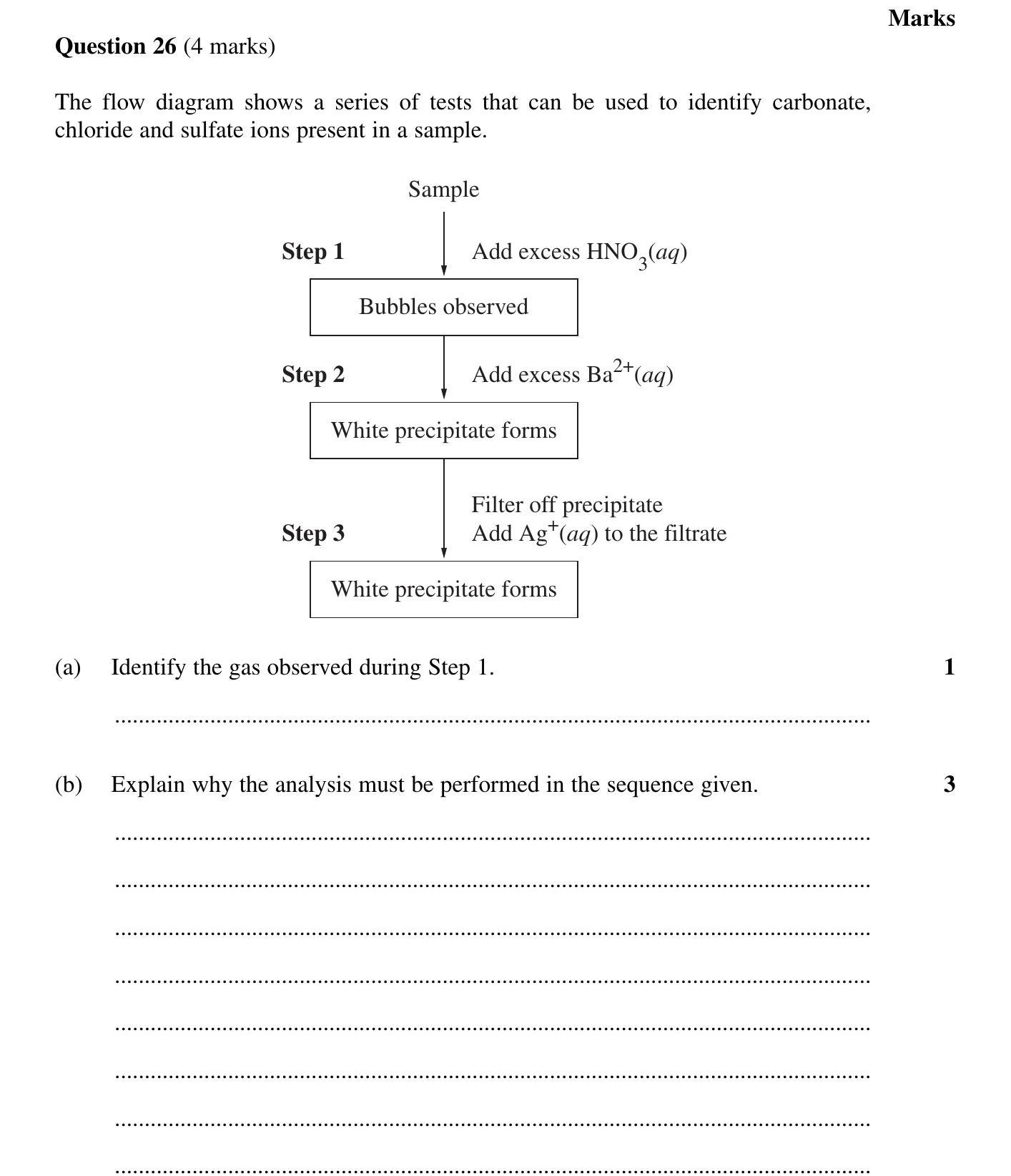Photo AI
The flow diagram shows a series of tests that can be used to identify carbonate, chloride and sulfate ions present in a sample - HSC - SSCE Chemistry - Question 26 - 2006 - Paper 1
Question 26

The flow diagram shows a series of tests that can be used to identify carbonate, chloride and sulfate ions present in a sample. Step 1: Add excess HNO₃(aq) Bubbles... show full transcript
Worked Solution & Example Answer:The flow diagram shows a series of tests that can be used to identify carbonate, chloride and sulfate ions present in a sample - HSC - SSCE Chemistry - Question 26 - 2006 - Paper 1
Step 1
Step 2
Explain why the analysis must be performed in the sequence given.
Answer
The analysis must be performed in the given sequence for the following reasons:
-
Step 1 - Reaction with HNO₃: Adding nitric acid first ensures that any carbonate ions present react to form carbon dioxide. This step is crucial because it confirms the presence of carbonate ions and prevents interference from other tests.
-
Step 2 - Addition of Ba²⁺: After eliminating carbonate, adding barium ions (Ba²⁺) will help identify sulfate ions (SO₄²⁻). If sulfate is present, it will form a white precipitate of barium sulfate (BaSO₄). Performing this step after carbonates ensures accurate results without prior conflicts.
-
Step 3 - Filtration and addition of Ag⁺: Finally, filtering off the precipitate allows for a clean sample to test for chloride ions. Adding silver ions (Ag⁺) to the filtrate will produce a white precipitate of silver chloride (AgCl) if chloride ions exist. This order prevents the formation of precipitates that could obscure the results of the next steps.
